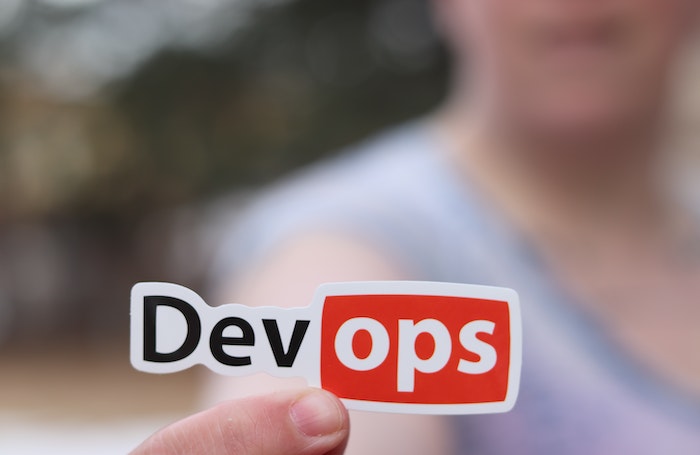
In today’s fast-paced digital landscape, businesses are continuously seeking ways to stay ahead of the competition. Software development plays a crucial role in this pursuit, and the adoption of DevOps practices has become increasingly popular.
DevOps, a combination of software development and IT operations, enables organizations to develop and deliver software faster and with higher quality. However, with faster software delivery comes the challenge of managing releases effectively. This is where release management comes in.
In this comprehensive guide, we will delve into the basics of release management in DevOps, its benefits, strategies, tools, best practices, challenges, and solutions.
Whether you are a seasoned DevOps professional or new to the field, this guide will provide you with a comprehensive understanding of release management and how to implement it successfully in your organization.
What is Release Management?
Release management is a critical component of the DevOps methodology that ensures software is delivered efficiently and reliably. It involves managing the entire process of software release, from planning to deployment and monitoring.
In this section, we will delve into the key aspects of release management and its importance in the DevOps process.
Here are the essential points to understand what release management is:
Release Planning
The Release planning involves defining the scope and objectives of the release, identifying the features and functionalities to be included, and determining the release schedule.
Release Design
Release design involves creating the architecture, infrastructure, and environment required for the release. It includes defining the hardware and software requirements, selecting the deployment model, and establishing the testing framework.
Release Building
Release building involves assembling the software components and creating the final build. It includes compiling the code, integrating the modules, and creating the deployment packages.
Release Testing
Release testing involves validating the software for functionality, performance, security, and compatibility. It includes unit testing, integration testing, system testing, and user acceptance testing.
Release Deployment
Release deployment involves the actual rollout of the software to the production environment. It includes configuring the servers, deploying the software, and performing the necessary post-deployment tasks.
Release Monitoring
Release monitoring involves tracking the software’s performance and identifying any issues that arise. It includes monitoring the system logs, analyzing the performance metrics, and responding to any alerts or incidents.
Benefits of Release Management
Release management plays a crucial role in the DevOps methodology, enabling organizations to deliver software efficiently and reliably. However, release management offers more than just efficient software delivery.
In this section, we will explore the key benefits of release management in DevOps and how it can help organizations achieve their business objectives.
Here are the essential benefits of release management:
Risk Reduction
Release management helps to minimize the risks associated with software releases by ensuring that releases are thoroughly tested, properly configured, and compatible with the production environment.
Cost Reduction
Release management helps to reduce costs by automating the release process, reducing manual errors, and optimizing resources. This results in faster and more efficient software releases, which translate to cost savings for the organization.
Efficiency Improvement
Release management helps to improve efficiency by enabling teams to collaborate effectively, reducing release cycle times, and providing timely feedback to developers. This results in faster time-to-market and better utilization of resources.
Customer Satisfaction
Release management helps to improve customer satisfaction by delivering software that is of high quality, reliable, and meets the customer’s requirements. This results in higher customer retention, better brand reputation, and increased revenue.
Continuous Improvement
Release management enables continuous improvement by providing feedback on the software development process and identifying areas for improvement. This results in a culture of continuous improvement, which is essential for staying competitive in today’s market.
Release Management Strategies
Release management is a crucial component of the DevOps methodology, enabling organizations to deliver software efficiently and reliably. However, effective release management requires a well-defined strategy that aligns with the organization’s objectives.
In this section, we will explore the key release management strategies and their benefits.
Continuous Delivery
Continuous delivery is a release management strategy that enables organizations to release software quickly, reliably, and frequently. It involves automating the entire release process, from code development to deployment, using tools such as continuous integration, testing, and deployment.
Release Train
Release train is a release management strategy that involves synchronizing the release schedules of multiple software components or products. It ensures that all components are tested, integrated, and released together, reducing the risk of compatibility issues and improving software quality.
Blue-Green Deployment
Blue-green deployment is a release management strategy that involves deploying two identical production environments, one active (blue) and the other inactive (green).
Software releases are deployed to the inactive environment, allowing for testing and verification before switching to the active environment. This reduces the risk of downtime and enables faster rollbacks in case of issues.
Feature Flags
Feature flags are a release management strategy that involves selectively enabling or disabling features within software releases. This enables organizations to release software incrementally, test new features with a small subset of users, and roll back changes quickly if necessary.
Rollback Strategy
Rollback strategy is a release management strategy that defines the process for reversing a release in case of issues. It involves identifying the steps to be taken, such as restoring backups, reverting to previous versions, and communicating the rollback to stakeholders.
Release Management Tools
Release management is a critical part of the DevOps methodology, and it requires the use of various tools to ensure efficient and reliable software delivery. It is offered by almost every DevOps consulting company.
In this section, we will explore the key release management tools and their benefits.
Version Control Systems
Version control systems, such as Git, SVN, and Mercurial, enable developers to manage changes to source code and collaborate effectively. They provide features such as branching, merging, and versioning, enabling teams to work on multiple features or releases simultaneously.
Continuous Integration Tools
Continuous integration (CI) tools, such as Jenkins, CircleCI, and Travis CI, automate the process of building and testing software changes as they are committed to version control. This ensures that changes are tested and validated before they are merged into the main codebase, reducing the risk of integration issues.
Configuration Management Tools
Configuration management tools, such as Ansible, Chef, and Puppet, enable organizations to manage the configuration of their infrastructure and software. They provide features such as automation, versioning, and orchestration, enabling teams to manage large and complex environments efficiently.
Deployment Automation Tools
Deployment automation tools, such as Octopus Deploy, enable organizations to automate the process of deploying software to different environments, such as development, testing, and production. They provide features such as release orchestration, versioning, and rollback, enabling teams to deploy software quickly and reliably.
Monitoring and Alerting Tools
Monitoring and alerting tools, such as Prometheus, Grafana, and Nagios, enable organizations to monitor the performance and availability of their software and infrastructure. They provide features such as real-time metrics, dashboards, and alerts, enabling teams to identify and respond to issues quickly.
Release Management Best Practices
Release management is a critical component of the DevOps methodology, enabling organizations to deliver software efficiently and reliably. However, effective release management requires adherence to best practices that align with the organization’s objectives.
In this section, we will explore the key release management best practices and their benefits.
Define a Release Policy
A well-defined release policy outlines the procedures, guidelines, and criteria for releasing software. It ensures that all stakeholders, including developers, testers, and operations teams, are aligned on the release process, reducing the risk of errors and conflicts.
Automate the Release Process
Automating the release process using tools such as continuous integration, testing, and deployment, reduces the risk of human errors and ensures consistent and repeatable releases.
Practice Continuous Integration
Continuous integration involves integrating code changes frequently and automatically, enabling teams to identify and fix issues early in the development process.
Conduct Thorough Testing
Thorough testing, including unit, integration, and acceptance testing, ensures that the software meets the functional and non-functional requirements and reduces the risk of issues in production.
Use Feature Flags
Feature flags enable teams to release software incrementally, test new features with a small subset of users, and roll back changes quickly if necessary.
Document the Release Process
Documenting the release process, including the steps, tools, and dependencies involved, ensures that the process is repeatable and helps teams identify areas for improvement.
Monitor and Measure Release Performance
Monitoring and measuring release performance using metrics such as release frequency, lead time, and mean time to recovery, enables teams to identify bottlenecks and continuously improve the release process.
Conclusion
Release management is a critical component of the DevOps methodology that enables organizations to deliver software efficiently and reliably. By adopting best practices and using appropriate tools and strategies, organizations can improve software quality, reduce risks, and increase productivity.
However, release management also poses several challenges that require effective solutions, such as breaking down complexity, improving communication, and ensuring security. By addressing these challenges, organizations can optimize their release management processes and achieve their objectives.
In today’s fast-paced digital world, effective release management is essential for organizations to stay competitive and meet the evolving needs of their customers.










